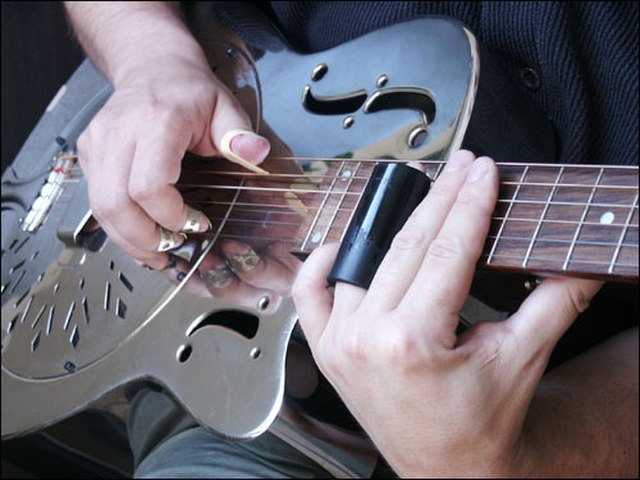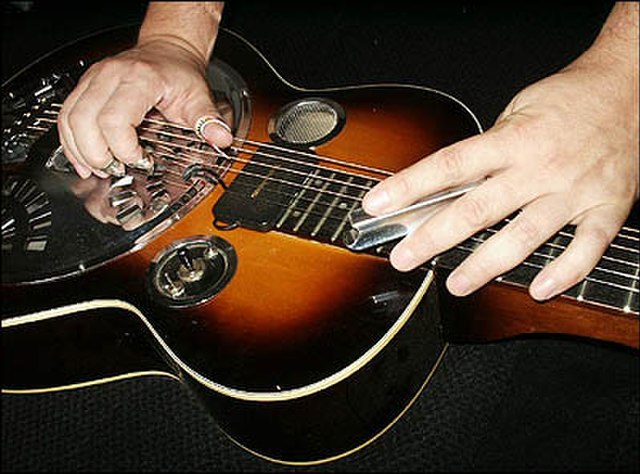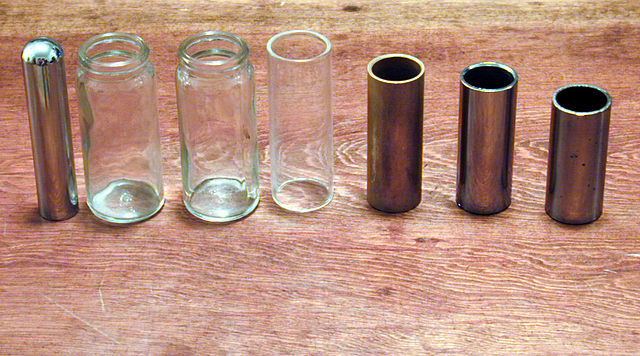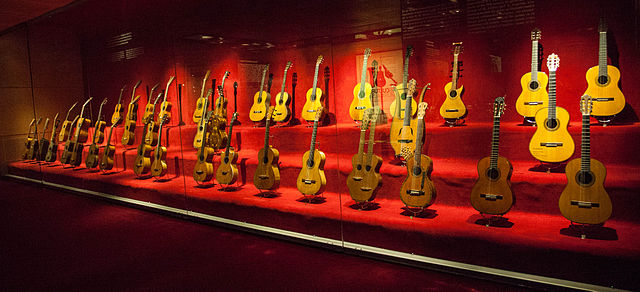Slide guitar is a technique for playing the guitar that is often used in blues music. It involves playing a guitar while holding a hard object against the strings, creating the opportunity for glissando effects and deep vibratos that reflect characteristics of the human singing voice. It typically involves playing the guitar in the traditional position with the use of a slide fitted on one of the guitarist's fingers. The slide may be a metal or glass tube, such as the neck of a bottle, giving rise to the term bottleneck guitar to describe this type of playing. The strings are typically plucked while the slide is moved over the strings to change the pitch. The guitar may be placed on the player's lap and played with a hand-held bar.
A musician playing slide guitar style; The slide is on his left ring finger. He is playing a metal-body resonator guitar (a National-type) using fingerpicks on his right hand.
Ry Cooder using a glass slide in 2009
Wooden resonator guitar played with a steel, angled to form a chord unavailable from straight open tuning
Image: Coricidinslides
The guitar is a stringed musical instrument that is usually fretted and typically has six or twelve strings. It is usually held flat against the player's body and played by strumming or plucking the strings with the dominant hand, while simultaneously pressing selected strings against frets with the fingers of the opposite hand. A guitar pick may also be used to strike the strings. The sound of the guitar is projected either acoustically, by means of a resonant hollow chamber on the guitar, or amplified by an electronic pickup and an amplifier.
Instrument labeled "cythara" in the Stuttgart Psalter, a Carolingian psalter from 9th century Paris.
19th-century guitar made by luthier Manuel de Soto held by Spanish guitarist Rafael Serrallet
Guitar collection in Museu de la Música de Barcelona
The Guitar Player (c. 1672), by Johannes Vermeer








